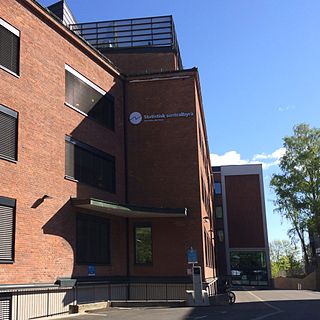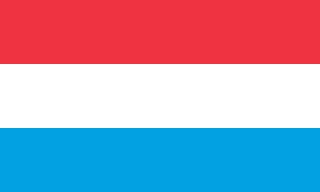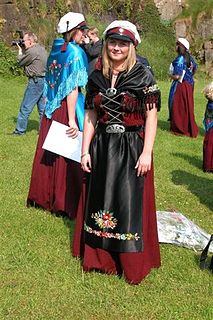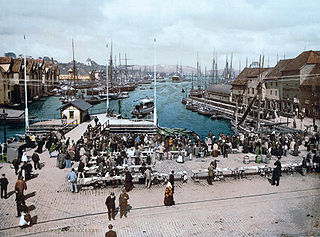Statistics Norway demographic statistics
| Historical population | ||
|---|---|---|
| Year | Pop. | ±% |
| 1769 | 59,576 | — |
| 1801 | 79,134 | +32.8% |
| 1855 | 132,245 | +67.1% |
| 1900 | 259,315 | +96.1% |
| 1950 | 339,218 | +30.8% |
| 2000 | 464,328 | +36.9% |
| 2010? | 464,665 | +0.1% |
| 2020? | 475,701 | +2.4% |
| 2030? | 489,019 | +2.8% |
| Source: Statistics Norway . | ||
The following demographic statistics are from the Statistics Norway, unless otherwise indicated.

Statistics Norway is the Norwegian statistics bureau. It was established in 1876.
Age and sex distribution
Age structure
Norway
(2005 est.)
0–14 years: 19.7% (male 466,243; female 443,075)
15–64 years: 65.6% (male 1,234,384; female 1,486,887)
65 years and over: 14.7% (male 285,389; female 392,331)
Northern Norway
(2009 est.)
0–14 years: 18.9% (male 44,848; female 42,315)
15–64 years: 65.5% (male 156,476; female 147,465)
65 years and over: 15.6% (male 32,017; female 40,304)
Population
- 464,328 (January 1, 2000)
- 464,649 (July 1, 2009)
- Population growth
- 321 (0.06%)
In biology or human geography, population growth is the increase in the number of individuals in a population. Many of the world's countries, including many in Sub-Saharan Africa, the Middle East, South Asia and South East Asia, have seen a sharp rise in population since the end of the Cold War. The fear is that high population numbers are putting further strain on natural resources, food supplies, fuel supplies, employment, housing, etc. in some of the less fortunate countries. For example, the population of Chad has ultimately grown from 6,279,921 in 1993 to 10,329,208 in 2009, further straining its resources. Vietnam, Mexico, Nigeria, Egypt, Ethiopia, and the DRC are witnessing a similar growth in population.
Population - comparative
slightly larger than Malta, but slightly smaller than Luxembourg.

Malta, officially known as the Republic of Malta, is a Southern European island country consisting of an archipelago in the Mediterranean Sea. It lies 80 km (50 mi) south of Italy, 284 km (176 mi) east of Tunisia, and 333 km (207 mi) north of Libya. With a population of about 475,000 over an area of 316 km2 (122 sq mi), Malta is the world's tenth smallest and fifth most densely populated country. Its capital is Valletta, which is the smallest national capital in the European Union by area at 0.8 km.2 The official languages are Maltese and English, with Maltese officially recognised as the national language and the only Semitic language in the European Union.

Luxembourg, officially the Grand Duchy of Luxembourg, is a small landlocked country in western Europe. It is bordered by Belgium to the west and north, Germany to the east, and France to the south. Its capital, Luxembourg City, is one of the three official capitals of the European Union and the seat of the European Court of Justice, the highest judicial authority in the EU. Its culture, people, and languages are highly intertwined with its neighbours, making it essentially a mixture of French and German cultures, as evident by the nation's three official languages: French, German, and the national language, Luxembourgish. The repeated invasions by Germany, especially in World War II, resulted in the country's strong will for mediation between France and Germany and, among other things, led to the foundation of the European Union.
Population growth rate
0.29% (in 2008)
Population growth rate - comparative
slightly larger than United Kingdom, but slightly smaller than Denmark.

The United Kingdom, officially the United Kingdom of Great Britain and Northern Ireland but more commonly known as the UK or Britain, is a sovereign country lying off the north-western coast of the European mainland. The United Kingdom includes the island of Great Britain, the north-eastern part of the island of Ireland and many smaller islands. Northern Ireland is the only part of the United Kingdom that shares a land border with another sovereign state—the Republic of Ireland. Apart from this land border, the United Kingdom is surrounded by the Atlantic Ocean, with the North Sea to the east, the English Channel to the south and the Celtic Sea to the south-west, giving it the 12th-longest coastline in the world. The Irish Sea lies between Great Britain and Ireland. With an area of 242,500 square kilometres (93,600 sq mi), the United Kingdom is the 78th-largest sovereign state in the world. It is also the 22nd-most populous country, with an estimated 66.0 million inhabitants in 2017.

Denmark, officially the Kingdom of Denmark, is a Nordic country and the southernmost of the Scandinavian nations. Denmark lies southwest of Sweden and south of Norway, and is bordered to the south by Germany. The Kingdom of Denmark also comprises two autonomous constituent countries in the North Atlantic Ocean: the Faroe Islands and Greenland. Denmark proper consists of a peninsula, Jutland, and an archipelago of 443 named islands, with the largest being Zealand, Funen and the North Jutlandic Island. The islands are characterised by flat, arable land and sandy coasts, low elevation and a temperate climate. Denmark has a total area of 42,924 km2 (16,573 sq mi), land area of 42,394 km2 (16,368 sq mi), and the total area including Greenland and the Faroe Islands is 2,210,579 km2 (853,509 sq mi), and a population of 5.8 million.
Total fertility rate
1.98 children born/woman (2007)
Language
Literacy
definition: age 15 and over can read and write
total population: 100%
male: NA%
female: NA%








